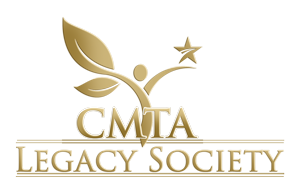Does CMT cause pain?
Patients with CMT often have pain. Pain can be related to nerve injury, but other causes of pain include musculoskeletal causes such as joint injury. About 80% of CMT patients have some pain. On the other hand, less than one in five complain of severe pain. Interestingly, the pain is not related to the severity of the neuropathy. The pain is usually in the feet and/or hands because these are the areas most often affected by CMT.
What is the best way to treat CMT pain?
Oral and topical medications, behavioral interventions, and/or improving sleep and mood are the key pain management strategies.
What are the best oral medications for CMT related neuropathic pain?
The best oral medications for the treatment of neuropathic pain are gabapentinoids (such as gabapentin and pregabalin), serotonin norepinephrine reuptake inhibitors (SNRIs such as duloxetine and venlafaxine), tricyclic antidepressants (TCAs such as nortriptyline and amitriptyline), and sodium channel blockers (such as oxcarbamazepine and lamotrigine). All of these medications lead to the same amount of pain relief and all of these medications have potential side effects. These medications also take weeks to months to work and often require increasing the dose until pain relief occurs, side effects are too much, or the top dose is reached. The expectation should not be complete pain relief. The main goal of treatment is tolerable pain or better. There is often a trial and error process since predicting which medication is best for an individual patient is hard to do. Sometimes patients need more than one medication. If a medication does not work, switching to another class of medications makes more sense than trying a medication in the same class. All of the medications above are available as generic and should be affordable. If the costs are high, your physician should be able to help you find one that is affordable.
What are the best topical medications for CMT related neuropathic pain?
Capsaicin and lidocaine are both topicals that can reduce nerve pain. Capsaicin comes in different doses including an over the counter cream (0.075%) and a prescription only application (8%) that requires medical staff to apply it. The over the counter cream is cheaper and more convenient. Lidocaine comes in creams and patches. An over the counter 4% lidocaine patch is available and a 5% prescription patch is also an option. The over the counter patch is cheaper and more convenient. One advantage of topical medications is that they often have less side effects than oral medications.
What are the best alternative treatments for CMT related neuropathic pain?
Medications are not the only option to relieve nerve pain. Other options include cognitive behavioral therapy, mindfulness, and exercise. Cognitive behavioral therapy is the best studied of these treatments. Similar to topicals, side effects are much less of an issue than for oral medications. Downsides include finding a therapist that is an expert in cognitive behavioral therapy and potentially cost and time.
What other factors are important for pain control?
Pain often leads to problems with sleep and with mood. Importantly, sleep and mood problems also can lead to increased pain. Therefore, improving sleep and mood are critical components to pain relief. Good sleep hygiene, such as a regular bed time, not eating, exercising, or using electronic devices close to bedtime, and having a dark and cool bedroom, can help a great deal. Obstructive sleep apnea (usually snoring and/or waking up after sleep still feeling tired) is also common and can be greatly improved with a breathing machine. Depression and anxiety can be treated with medications, counseling, or the two together. Improving sleep and mood is often overlooked, but is often just as important as the pain treatments themselves.
Written and Reviewed by Brian Callaghan, MD on 8/10/2023





